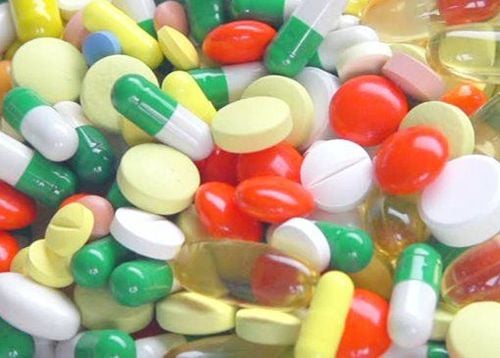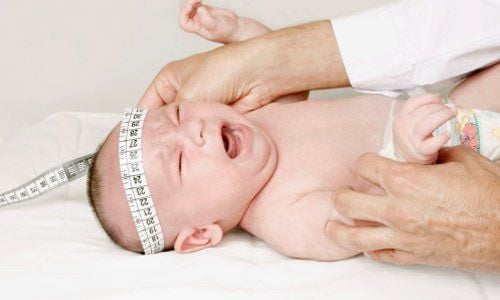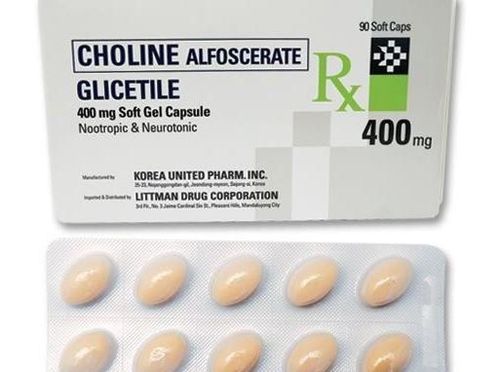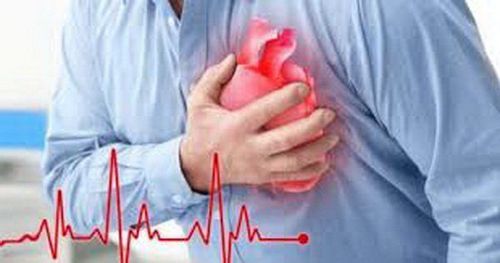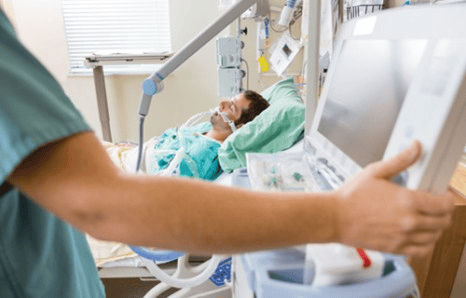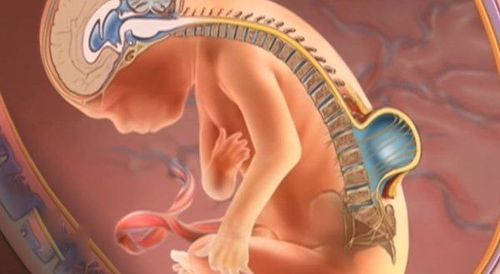This is an automatically translated article.
Coma in children is always an emergency. Therefore, the diagnosis of coma in children needs to be determined quickly and have the first aid facilities available, followed by appropriate treatment strategies, to limit the spread of damage as well as severe sequelae. on the long-term physical and mental development of children.
1. What is a pediatric coma?
The brain in a normal person is always adjusted to maintain the control function of the body's vital activities. Among them, consciousness is the most important function. This is a state of alertness in general and the ability to react to the environment in particular. This is acquired during the fetal stage.
For babies, consciousness is more clearly recognized through activities and nuances of the day. For example, babies cry when they are hungry or feel uncomfortable in their body and they will look along and show their joy when they hear their mother's voice or are petted or comforted by their mother.
The opposite of awakening is coma . This is a deeply unconscious state that cannot be overcome by nature. In it, children did not show any meaningful responses to stimuli from the environment. If the coma is prolonged, it will seriously affect the vital functions and serious complications.
Therefore, when detecting that a child has fallen into a coma or at least has cognitive impairment, it is necessary to have a vigilant attitude and seek help and timely rescue. Any delay at this stage or improper interventions may further endanger the child's life.

Khi trẻ rơi vào trạng thái hôn mê cần ngay lập tức gọi cấp cứu
2. What are the initial considerations in diagnosing coma in children?
2.1 Timing and timing
Acute onset: is a sign of intracranial hemorrhage, nonconvulsive status epilepticus, ischemic stroke, or traumatic brain injury.
Onset from minutes to hours: causes metabolic, infectious or progressive damage in head trauma
From hours to days: is a sign of intraventricular obstruction, hydrocephalus hydro or brain tumor
2.2 Associated symptoms
Fever: towards infection; Prior headache: does not exclude increased intracranial pressure; Lethargy, drowsiness before: caused by poisoning, metabolic disorders; Localized neurologic findings, confusion in recent weeks: possibility of neoplasm. Be wary of unintentional causes of non-accidental occult brain injury such as excessive shaking of the baby syndrome.
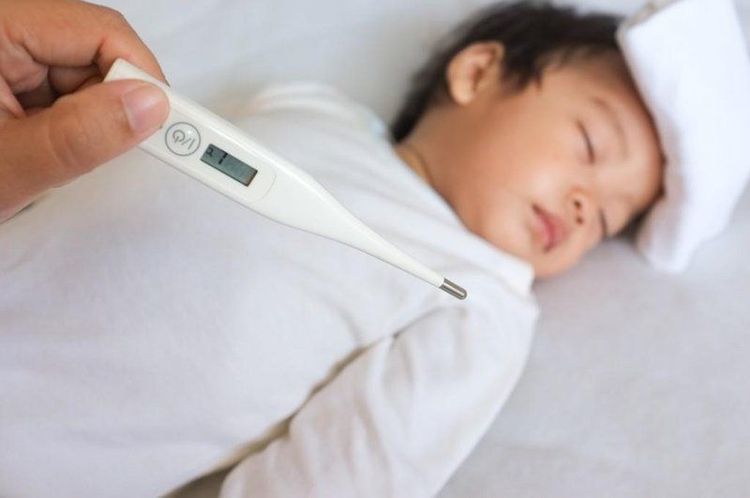
Sốt có thể là một triệu chứng trong chẩn đoán hôn mê ở trẻ em
3. What are the distinguishing conditions in the diagnosis of pediatric coma?
The different states of coma in children can be classified as structural or metabolic or toxicological causes.
3.1 Causes of structural damage
Trauma, infection, epidural or subdural hematoma, diffuse axonal injury, non-accidental trauma; The neoplasm directly blocks the drainage of cerebrospinal fluid and causes hydrocephalus, brain herniation; Cerebral infarction, cerebral hemorrhage, vasculitis or congenital abnormalities of blood supply to the brain; Localized infection, brain abscess, encephalitis; Bacterial infections (eg Rickettsia), viruses; Hydrocephalus, brain tumor.
3.2 Causes of metabolic abnormalities
Brain death due to lack of oxygen, drowning, heart failure, respiratory failure, CO poisoning, strangulation; Hypoglycaemic metabolic disorder, complications of acute hyperglycemia, hepatic encephalopathy, uremia, vitamin deficiency, fluid electrolyte imbalance; Exogenous toxins such as tranquilizers, antidepressants, antiepileptic drugs, cyanide, heavy metals; Infection, viral infection, bacteremia; Schizophrenia, migraine headaches.

Chết não do thiếu oxy là nguyên nhân gây hôn mê do bất thường chuyển hóa ở trẻ
4. What is the approach to diagnosis of coma in children?
4.1 Assessment of survivability
Stabilize the airway and ensure immobilization against cervical spine injuries. Tongue enema is the most common cause of airway obstruction in infants and causes unconsciousness.
Ensure circulatory function by examining the child for signs of shock. Check your heart rate, pulse, blood pressure, temperature and organ perfusion.
Determine whether the child is in a coma and distinguish it from other disturbances of consciousness. The Glasgow scale should be used to assess coma in children to ensure an objective and standardized approach, consistent with monitoring the child's disease progression.
4.2 Neurological examination
Look for bruises, hematomas, swelling suggestive of traumatic brain injury; Bleeding or fluid coming out of the nose or ears is a sign of a skull fracture that is causing bleeding or leaking of cerebrospinal fluid; Ophthalmoscopy for signs of papilledema or retinal hemorrhage; Metabolic or toxicological causes of coma are still capable of pupillary reflexes. Meanwhile, if the child already has brain damage, the pupils will dilate symmetrically and may no longer respond to light; Signs of resistance during neck flexion or leg elevation suggest meningeal irritation in meningitis. Similarly, positive Kernig's sign and Brudzinski's sign may also indicate the possibility of meningeal irritation; Examine the cranial nerves and assess the integrity of the reflex arcs. Sensory and motor reflexes, assessment of muscle tone, muscle strength on each side of the body. Detecting abnormal postures such as decortical rigidity or decerebral spasticity is indicative of cascade brain injury.

Khám phản xạ đồng tử để chẩn đoán hôn mê ở trẻ em
5. Examination of other organ systems
If the child has a cardiovascular problem such as congenital heart disease or infective endocarditis, this may be the source of intracranial thrombosis.
The baby's skin is purple due to causes that lead to poor oxygenation such as respiratory failure during asthma attacks, congenital heart disease, jaundice and yellow eyes due to liver failure, pale color due to anemia or low blood Pressure, shock, burgundy skin color are caused by CO poisoning.
Children have map-shaped, purple-red skin rashes that can be found with some infections such as meningococcal disease. Fruity breath odor in the setting of ketosis in children with type 1 diabetes, metabolic acidosis.

Nếu trẻ có vấn đề tim mạch như bệnh tim bẩm sinh là nguồn gốc của các huyết khối nội sọ.
6. How to treat coma in children?
The most important treatment intervention step when detecting a child in a coma is active resuscitation to ensure the child's life. Indications for endotracheal intubation and active respiratory control also need to be conducted immediately if the Glasgow score is lower than 9, the ability to breathe spontaneously is poor or there is apnea. At the same time, it is necessary to quickly rehydrate, use vasopressors or perform extrathoracic heart massage if the child is no longer circulating naturally.
When the child's life may be safe, the next step is to perform an examination and test to find the cause of the coma. Tests include blood tests, monitoring glucose levels and detecting toxic substances in the blood, electroencephalograms or imaging tools such as computed tomography, magnetic resonance imaging. A lumbar puncture in the presence of encephalitis, meningitis or intracranial hemorrhage cannot be ruled out.
Accordingly, the treatment will be appropriate to the cause of the coma, sometimes requiring surgical intervention. At the same time, avoid neglecting relevant issues in child care such as nutrition, hygiene and physical therapy to ensure that the child continues to develop comprehensively after getting out of the coma.
In summary, the diagnosis and treatment of a child with cognitive impairment or coma is a challenging medical issue for physicians caring for young children. In particular, the general approach and the treatment measures according to the cause are the core steps in restoring the child's awakening and minimizing the neurological sequelae.
When the child shows signs of coma, family members should immediately take them to a reputable medical facility for timely emergency treatment. Vinmec International General Hospital is a high quality medical facility in Vietnam, the doctors and nurses are all professionally trained, domestic & international, experienced and dedicated to patients. The system of modern and modern facilities and medical equipment is imported from the US, on par with major hospitals in the world.
To register for examination and treatment at Vinmec International General Hospital, you can contact the nationwide Vinmec Health System Hotline, or register online HERE.
References: static1.squarespace.com, learn.pediatrics.ubc.ca, ncbi.nlm.nih.gov, healthychildren.org




